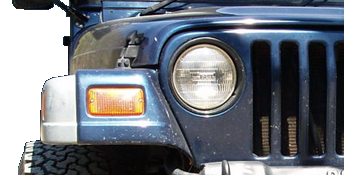87GMCJimmy
Well-Known Member
- Joined
- Apr 24, 2007
- Location
- Mint Hill, NC
I have a VR12,000 that I plan to install in a rear bumper on the Power Wagon. The issue I have is- at full load, the winch can require 457 amps! So, the way I see it, I have two options:
1)HUGE power and ground cables (it is about 20' worth of each) in about 2/0-4/0 (not sure if 2/0, 3/0, or 4/0 would be best???) size to minimize heat and voltage drop. The drawbacks are- amp draw on primary battery and expanse of cables (2/0-4/0 is PRICEY!!!)
OR
A second battery located out back near the winch. The drawbacks are- weight (negligible, truck already ways over 7,000lbs anyway), expense (dual battery kit (was looking at National Luna?), battery, etc) The advantages would be- an extra power source, full voltage to winch, and the ability to run smaller (cheaper) power cables and still have it work great!
BUT, it seems like any dual battery setup I've come across has always been fraught with gremlins, they never seem to work reliably. Maybe I'm only seeing the bad???
One of the biggest issues is- whatever I do, I do not want to have to hack into ANY stock wiring as the Canbus setup of the truck can be VERY finicky. (2012)
What would be the best setup for this??? Thanks in advance!
1)HUGE power and ground cables (it is about 20' worth of each) in about 2/0-4/0 (not sure if 2/0, 3/0, or 4/0 would be best???) size to minimize heat and voltage drop. The drawbacks are- amp draw on primary battery and expanse of cables (2/0-4/0 is PRICEY!!!)
OR
A second battery located out back near the winch. The drawbacks are- weight (negligible, truck already ways over 7,000lbs anyway), expense (dual battery kit (was looking at National Luna?), battery, etc) The advantages would be- an extra power source, full voltage to winch, and the ability to run smaller (cheaper) power cables and still have it work great!
BUT, it seems like any dual battery setup I've come across has always been fraught with gremlins, they never seem to work reliably. Maybe I'm only seeing the bad???
One of the biggest issues is- whatever I do, I do not want to have to hack into ANY stock wiring as the Canbus setup of the truck can be VERY finicky. (2012)
What would be the best setup for this??? Thanks in advance!



 Plus I get alot more use out of my jumper cables.
Plus I get alot more use out of my jumper cables.